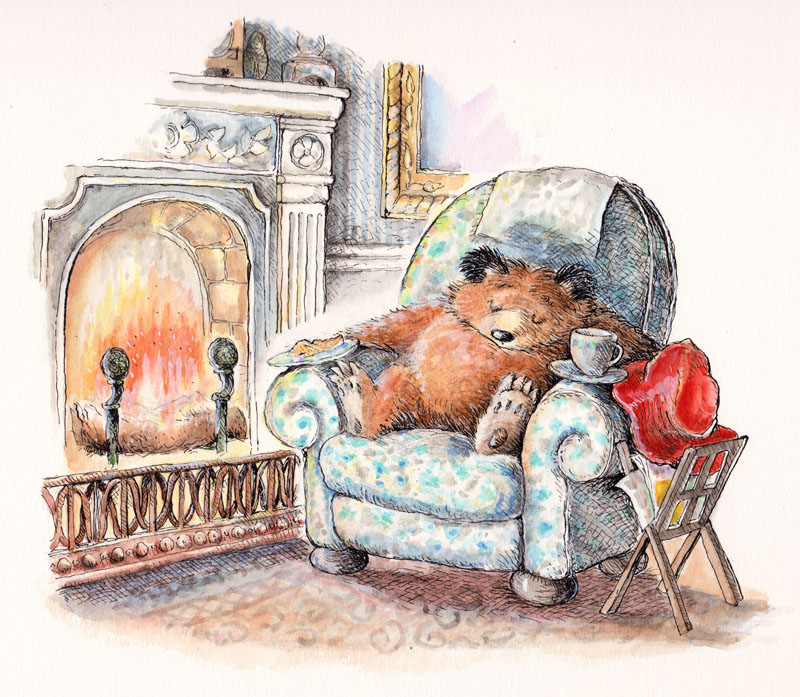
Beagle.
Beagle Basics
Where Are Beagles From?
Though there is evidence of Beagles from 400 BC Greece, their popularity rose in mid-18th century along with the prevalence of hare hunting for sport, packs of adept scenthound Beagles in tow. Beagles were brought by English settlers to the United States and intermixed with local scenthounds to create the smaller "American" foxhound-looking Beagle we have today.
How Many Types of Beagles Are There?
The AKC recognizes two types: 13 inch Beagles and 15 inch Beagles. Unofficially, there is muchmention of English Beagles and North American Beagles, the former tending to be larger.
Which Breeds Mix with Beagles?
Puggle (Pug + Beagle)
Borkie (Beagle + Yorkshire Terrier)
Beagleman (Beagle + Doberman Pinscher)
Jack-A-Bee (Jack Russel Terrier + Beagle)
Beagle Lifespan
Beagles live about 12-15 years.
Beagle Appearance
What Colors Do Beagles Come In?
Beagles can be lemon and white, orange and white, red and white, or tricolor.
How Much Do Beagles Shed?
Beagles are moderate shedders, but their hair is short and light. Nothing a regular brushing can't soothe!
Do You Need to Groom a Beagle?
Beagles don't require a lot of grooming. Their short, smooth coat is easily kept tidy and its waterproof aspect makes them easy to dry.
Beagle Temperament, Personality & Training
How Much Do Beagles Bark?
Beagles are fond of their own voice, though not prone to nuisance barking or yappiness. However, as with any dog, they can be discouraged from barking as frequently with proper training and exercise.
Are Beagles Good with Kids?
Beagles are known to be superb playmates to children, thanks to their patient temperament coupled with their love of play.
As with any breed, it is recommended that your child is always supervised when interacting with your Beagle to keep both the child and dog safe.
Are Beagles Good Family Dogs?
Beagles are outgoing, even-keeled, affectionate dogs, and make a very popular choice for a family dog. They get along well with other dogs and they love physical activity, so a family with a fondness for the outdoors and physical activity will make the best fit for this breed.
Are Beagles Good with Cats?
Beagles typically get along well with all animals and are friendly to all they meet. Their hunting instinct may present itself in giving chase to the cat, but not all Beagles display this instinct with cats. Of course, each dog (and cat) has his own preferences and temperament, but you can feel fairly confident your Beagle, if properly socialized to your cat and/or introduced at a young age, should get along just swell.
Are Beagles Easy to Train?
Beagles are affectionate and friendly, but they were also bred to work independently, which can make them a challenge to train. Patience, happy reinforcement, and motivation is key when giving Beagles obedience trianing. Also, it is important not to let your Beagle run loose, as it has been bred to follow his nose above all else.
Beagle Health
Do Beagles Have a Lot of Health Problems?
Beagles are mostly healthy animals with few inherited problems, and they enjoy relatively long lives.
What Diseases are Beagles Prone To?
Intervertebral Disc Disease: Intervertebral disc disease causes a bulge or rupture in the discs between the vertebrae. When that happens, it can cause pain, nerve damage, and paralysis. Sometimes IVDD is mild and may be relieved through crate rest and medication, but dogs with severe cases could need surgery or the use of a wheelchair cart. If a Beagle is having trouble walking, refuses to jump, is incontinent, won’t eat, or appears anxious, he should be taken to the vet as soon as possible.
Beagle Dwarfism: Also known as chondrodystrophy, Beagle dwarfism is a genetic disorder that causes extremely short legs. Dwarfism can also affect the spine and cause it to prematurely degenerate. Dwarfism in dogs can eventually lead to IVDD.
Hip and/or Elbow Dysplasia: Hip and elbow dysplasia are two of the most common skeletal diseases seen in dogs. They are similar diseases in which either the hip or elbow joint has grown abnormally or is misshapen. The abnormal shape prevents the joints and sockets from properly meeting one another, resulting in rubbing and grinding instead of sliding smoothly. Unlike in hip dysplasia, where the main problem is joint instability, the abnormalities seen in elbow dysplasia often result in pieces of bone and/or cartilage breaking loose and irritating the joint tissues. Over time, the rubbing from dysplasia can cause a variety of issues such as pain, lameness and secondary osteoarthritis. Surgery can be done to fix the joint if diagnosed before the onset of arthritis. If you are rescuing a Beagle, have him checked out by a vet to see if he has or is prone to getting dysplasia so you know what he will be able to handle in terms of activities and exercise.
Chinese Beagle Syndrome (CBS): The scientific term for Chinese Beagle Syndrome is Musladin Lueke Syndrome (MLS). This syndrome is characterized by a flat head and slanted eyes. A Beagle with CBS will also have turned out toes that make him look like a ballerina. Though their different look won’t have much of an effect on their lives, dogs with CBS are more likely to have heart problems.
Distichiasis: This condition occurs when eyelashes (known as distichia) grow in an abnormal location on the eyelid. In some cases, a dog may have an entire row of extra eyelashes. Eyelashes can also grow near an oil gland in the dog's eye and stick out along the edge of the eyelid. The extra eyelashes and abnormal location can irritate the eye, and you may notice your Beagle squinting or rubbing his eye(s). Distichiasis can be treated by freezing the excess eyelashes with liquid nitrogen and then removing them.
Eye problems: Corneal ulcers, cherry eye, cataracts, glaucoma, and scratched corneas are all issues that may affect a Beagle.
Others: Skeletal disorders, patellar luxation (dislocated kneecap), epilepsy, thyroid disorders, and ear infections, which commonly affect floppy-eared breeds. To identify some of these issues, a veterinarian may recommend skeletal and eye tests for the dog.
Purchasing vs Adopting a Beagle
How Much Does a Beagle Cost?
You can adopt a Beagle at a much lower cost than buying one from a breeder. The cost to adopt a Beagle is around $300 in order to cover the expenses of caring for the dog before adoption. In contrast, buying Beagles from breeders can be prohibitively expensive. Depending on their breeding, they usually cost anywhere from $800-$1,500.
Where Can I Adopt a Beagle
The easiest way to adopt a Beagle would be through a rescue that specializes in Beagles. A great place to start would be by starting a breed search on Adopt-a-Pet.com. The search will show you all the available Beagles in your area.
Beagle Shelters & Rescues
There are animal shelters and rescues that focus specifically on finding great homes for Beagle puppies.
Where Can I Find a Beagle Breeder?
We recommend you rescue a Beagle (or any dog) before you buy a puppy from a breeder. There are millions of homeless dogs across the country, many of which are purebred and who need homes. Adopting a Beagle can be life changing — not only for the dog, but also the adopter.
If you're not convinced and your intention is to buy a Beagle from a breeder, it is safest to purchase a puppy from a reputable breeder. When working with a breeder verify that the breeder you’re purchasing from does genetic testing of their animals and be sure to verify the puppy’s health information. Also make sure that the breeder will take back any pets they sell if for any reason the pet cannot stay in their home, and that the breeder will commit to finding those pets a new home if needed.
Please understand that you may have to drive several hundred miles in order to find a reputable, safe, and dependable breeder to purchase your Beagle and you'll be paying $600 more on average. Imagine all the chew toys and dog sweaters you could get if you adopted a Beagle instead!


 Learn English for free
Learn English for free 

































